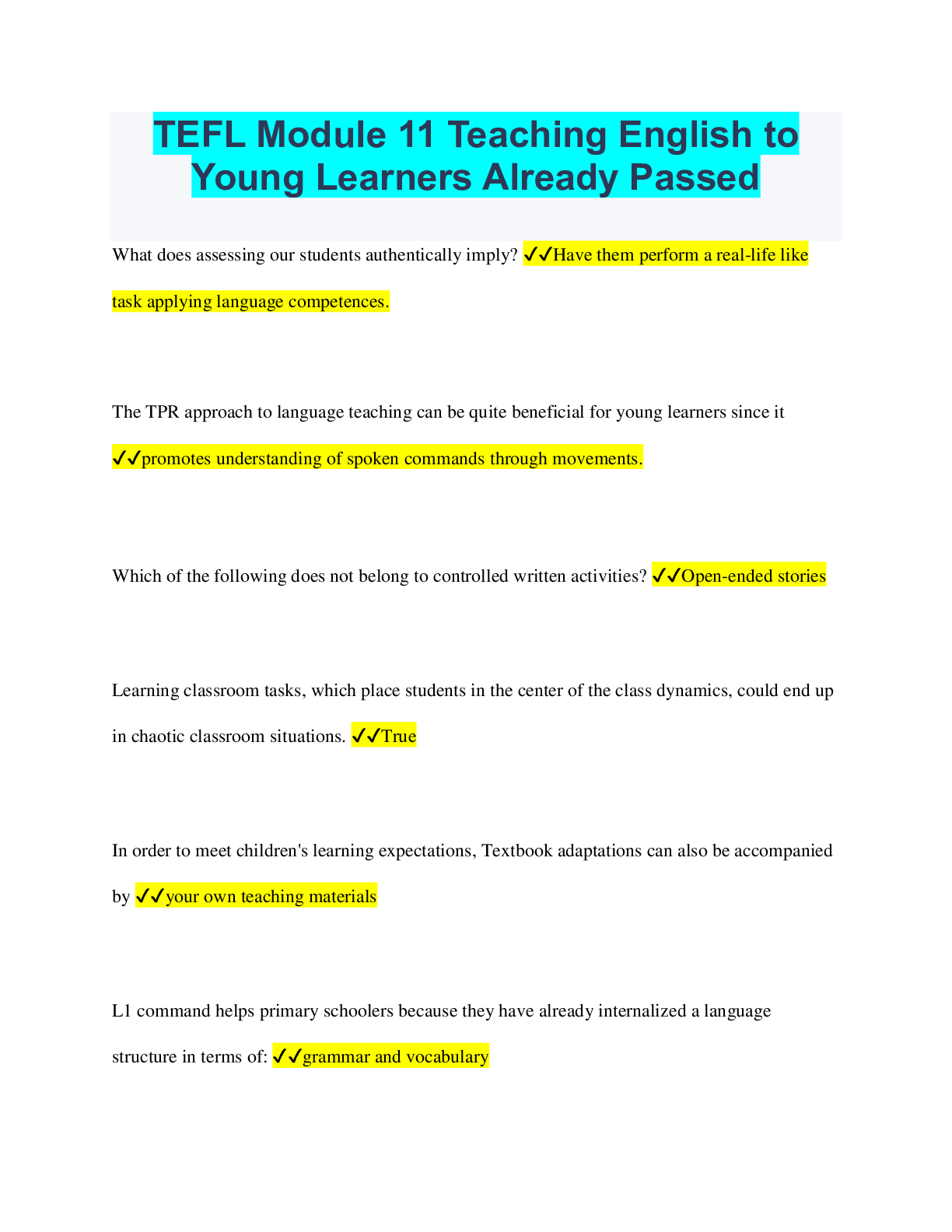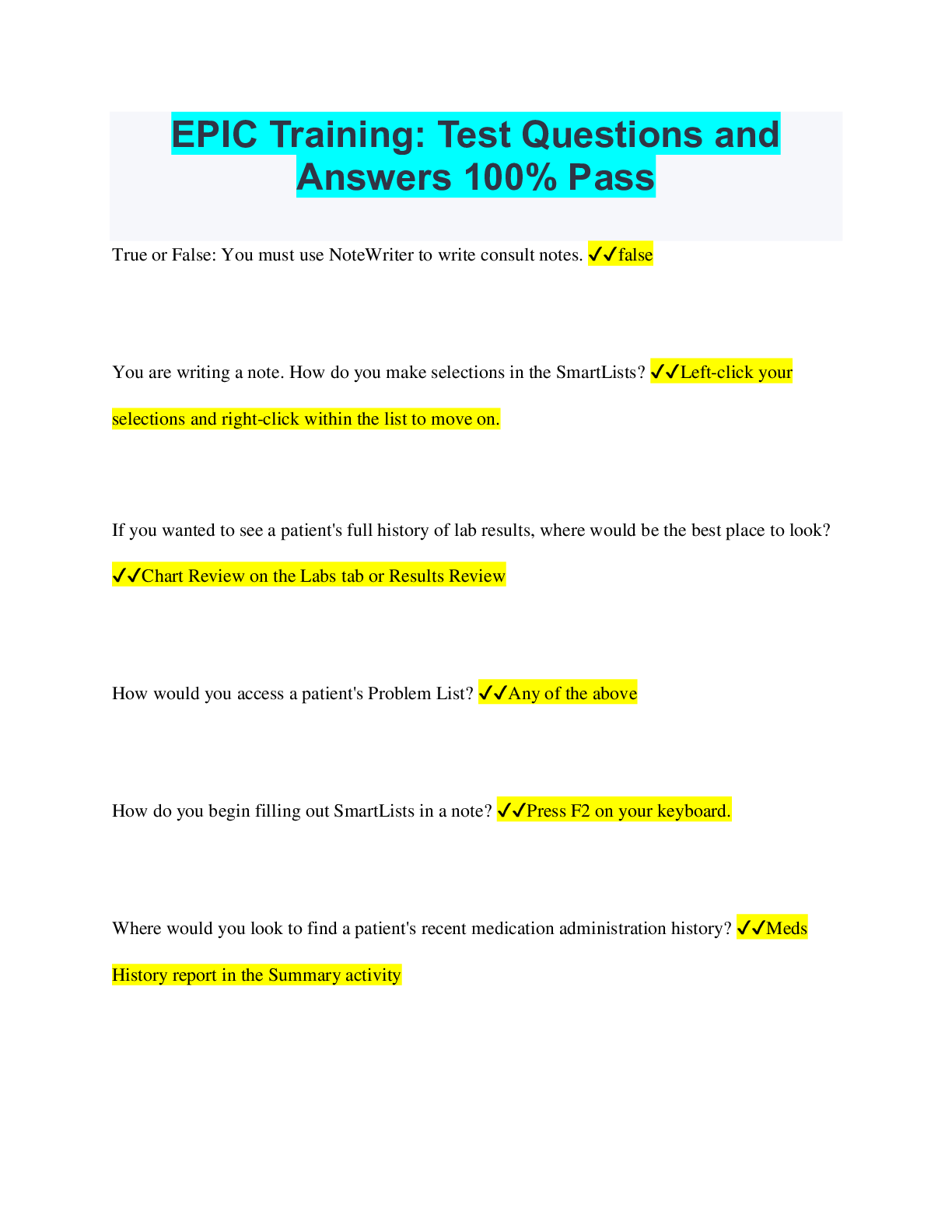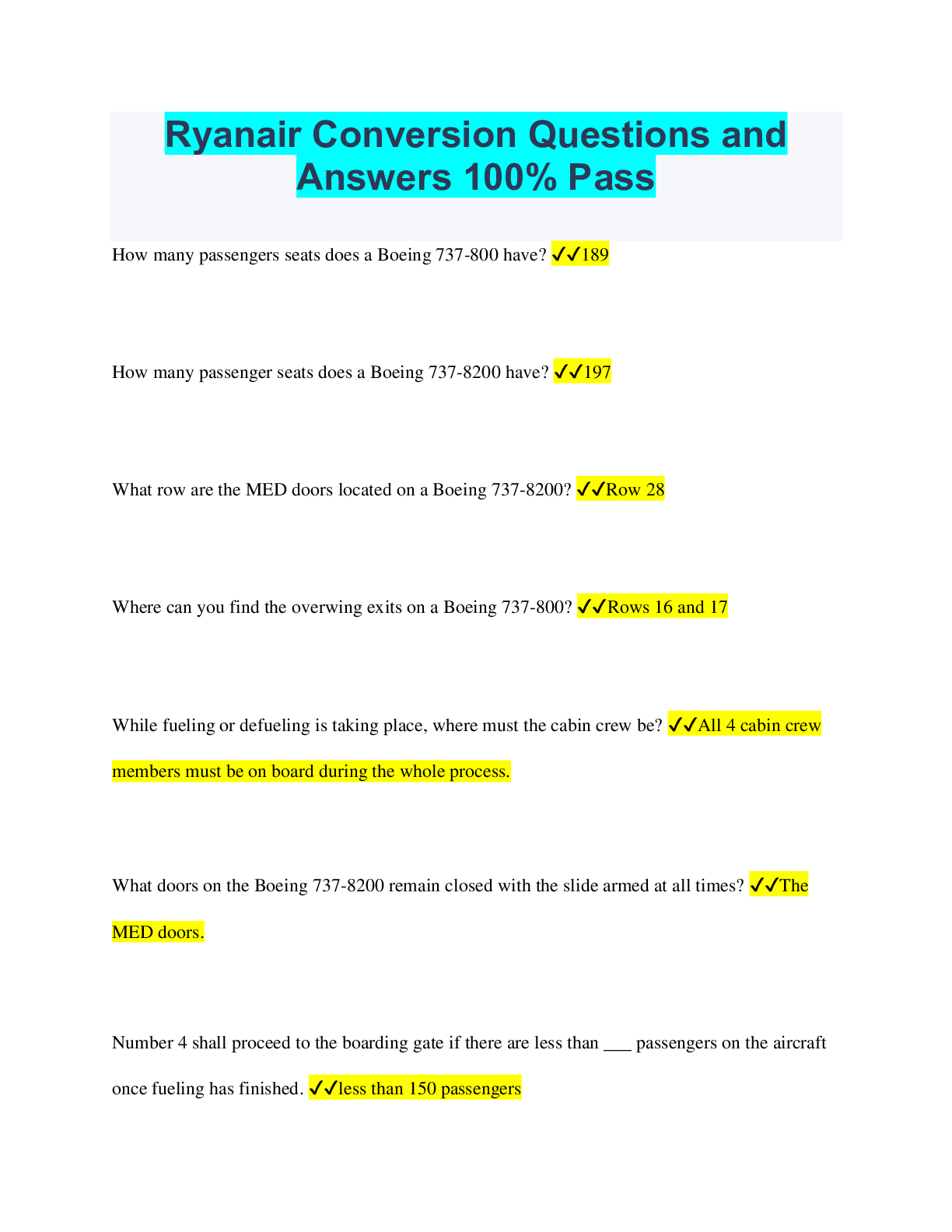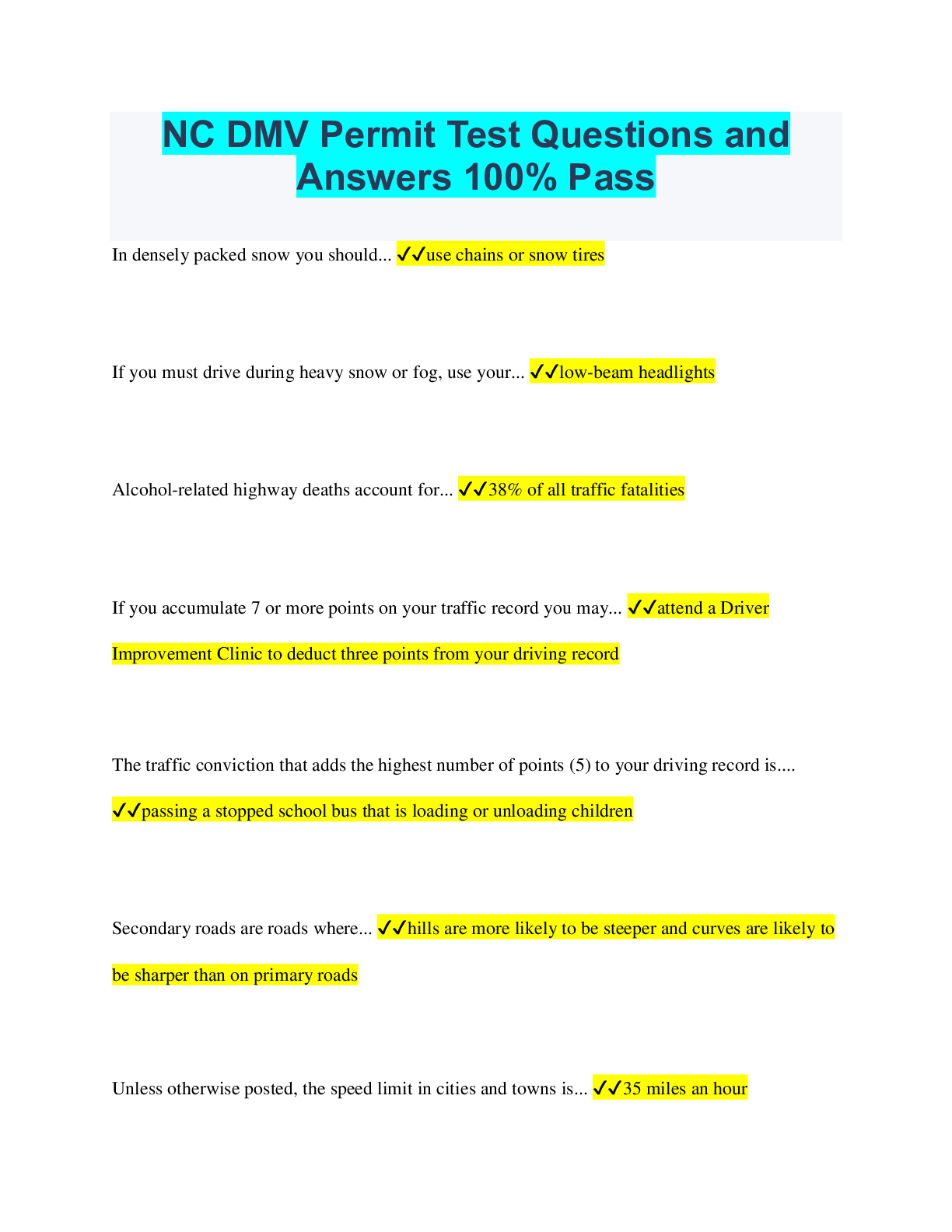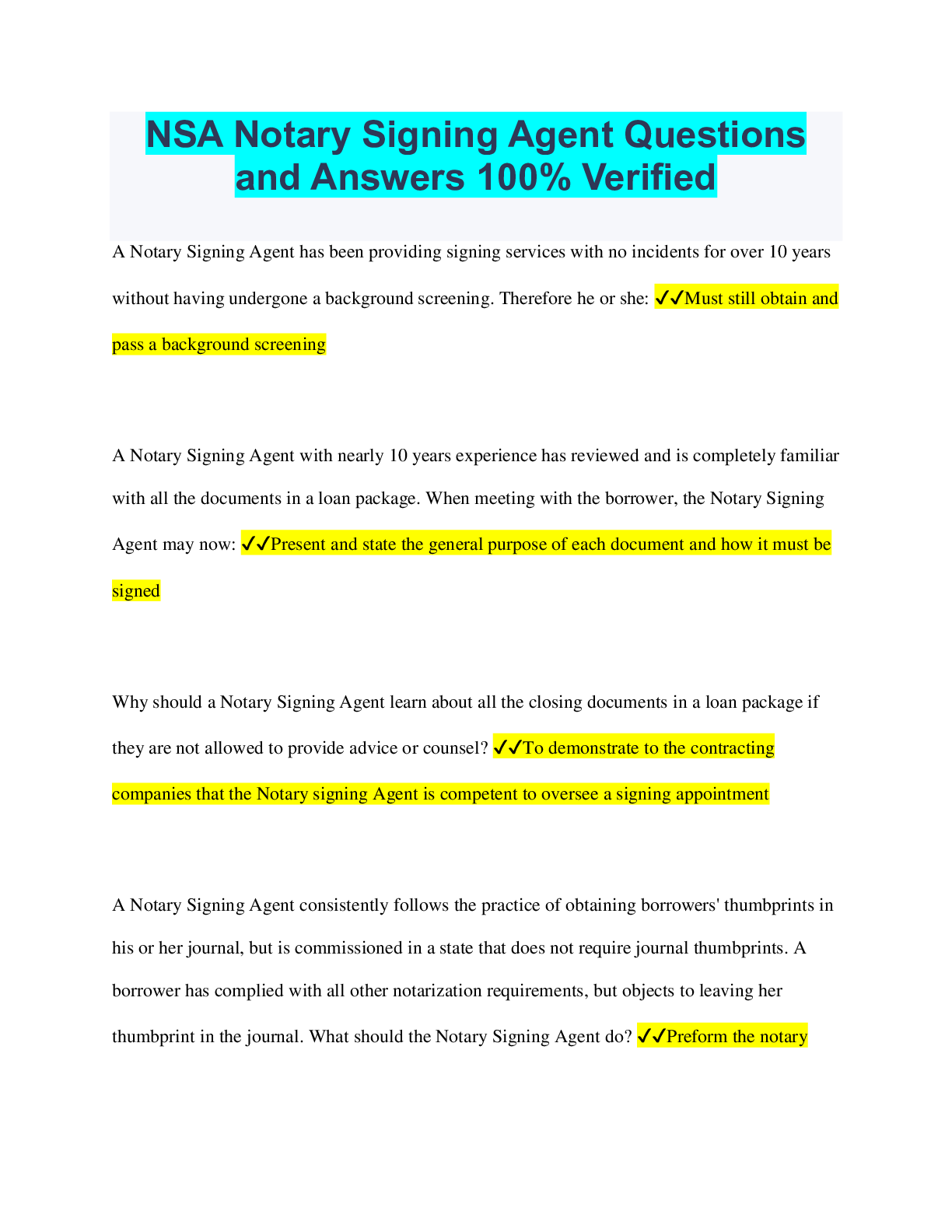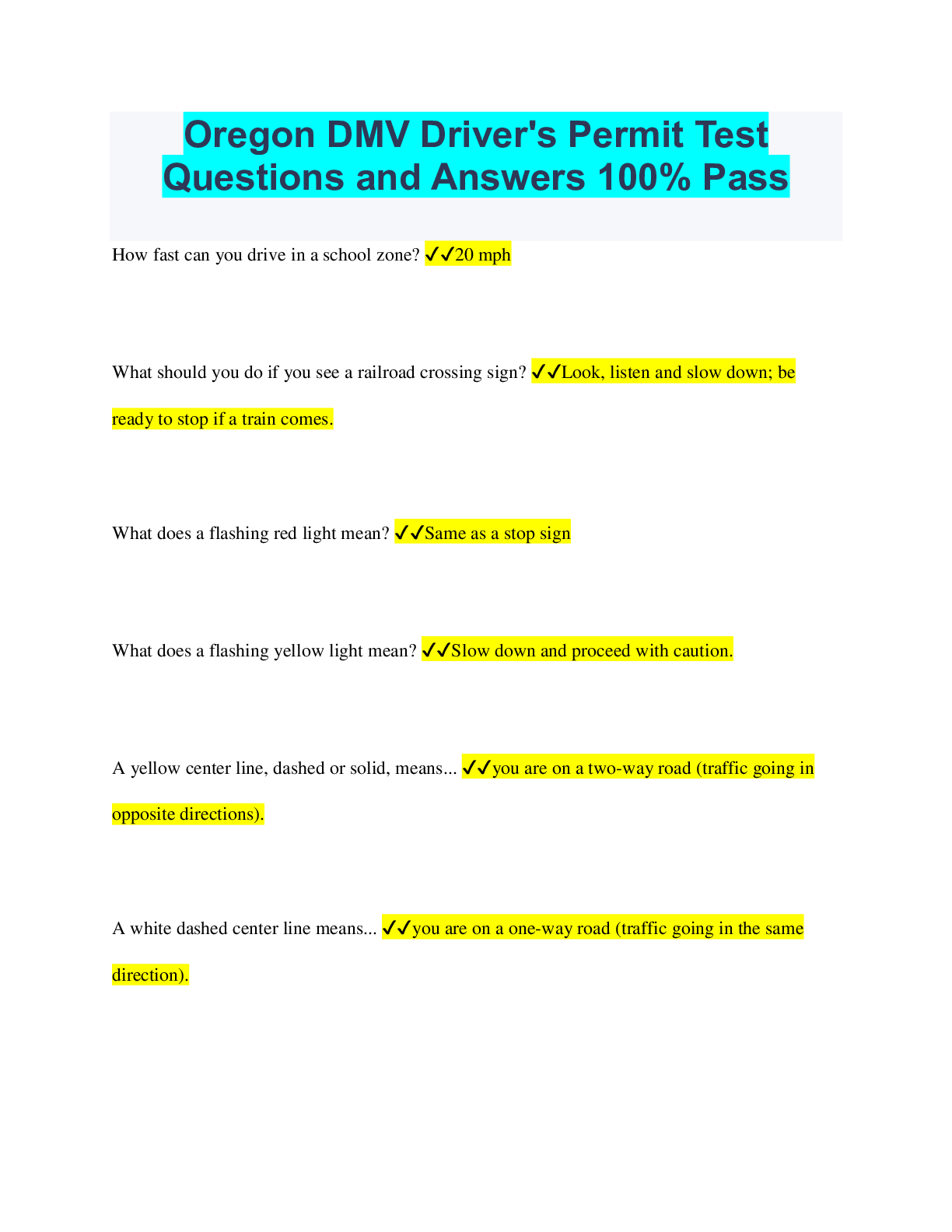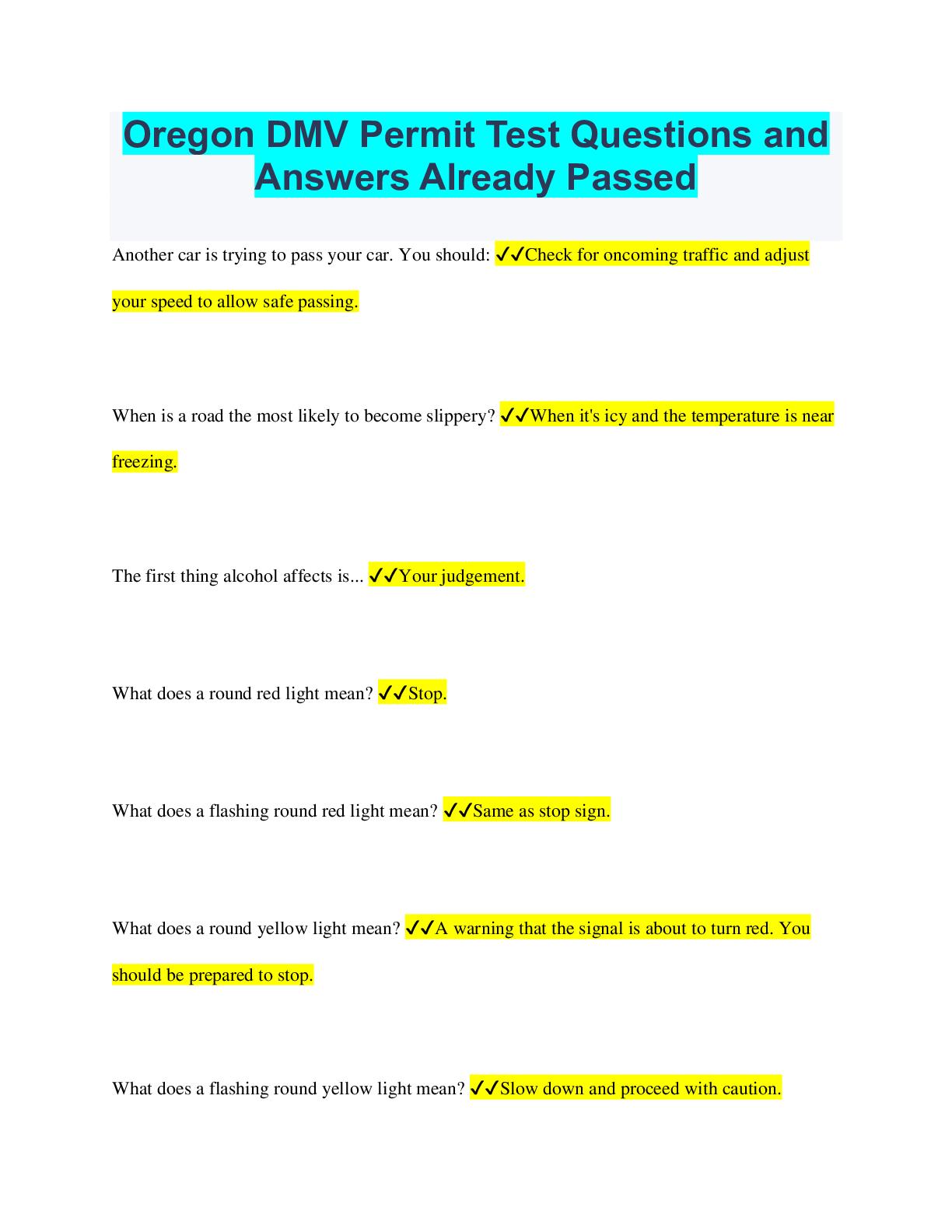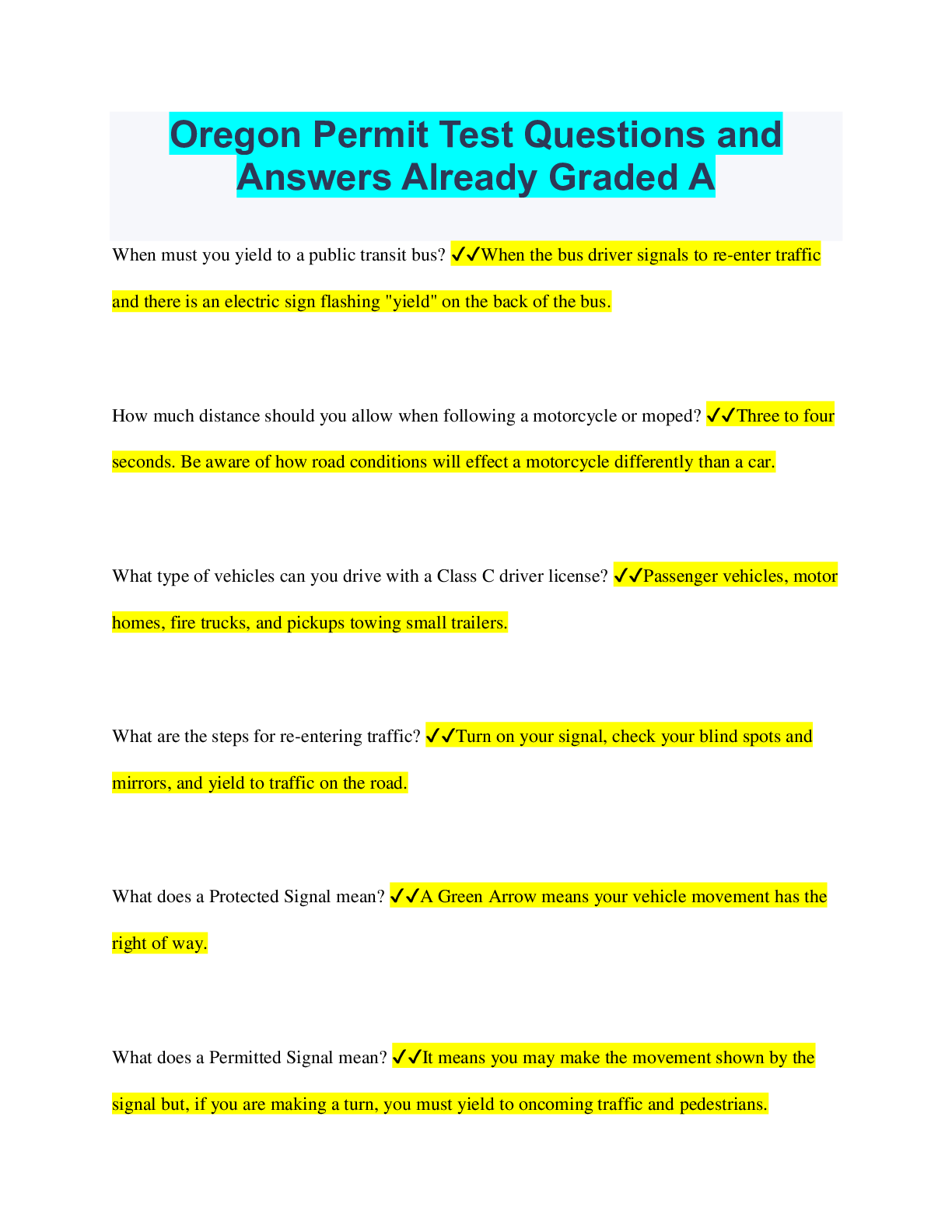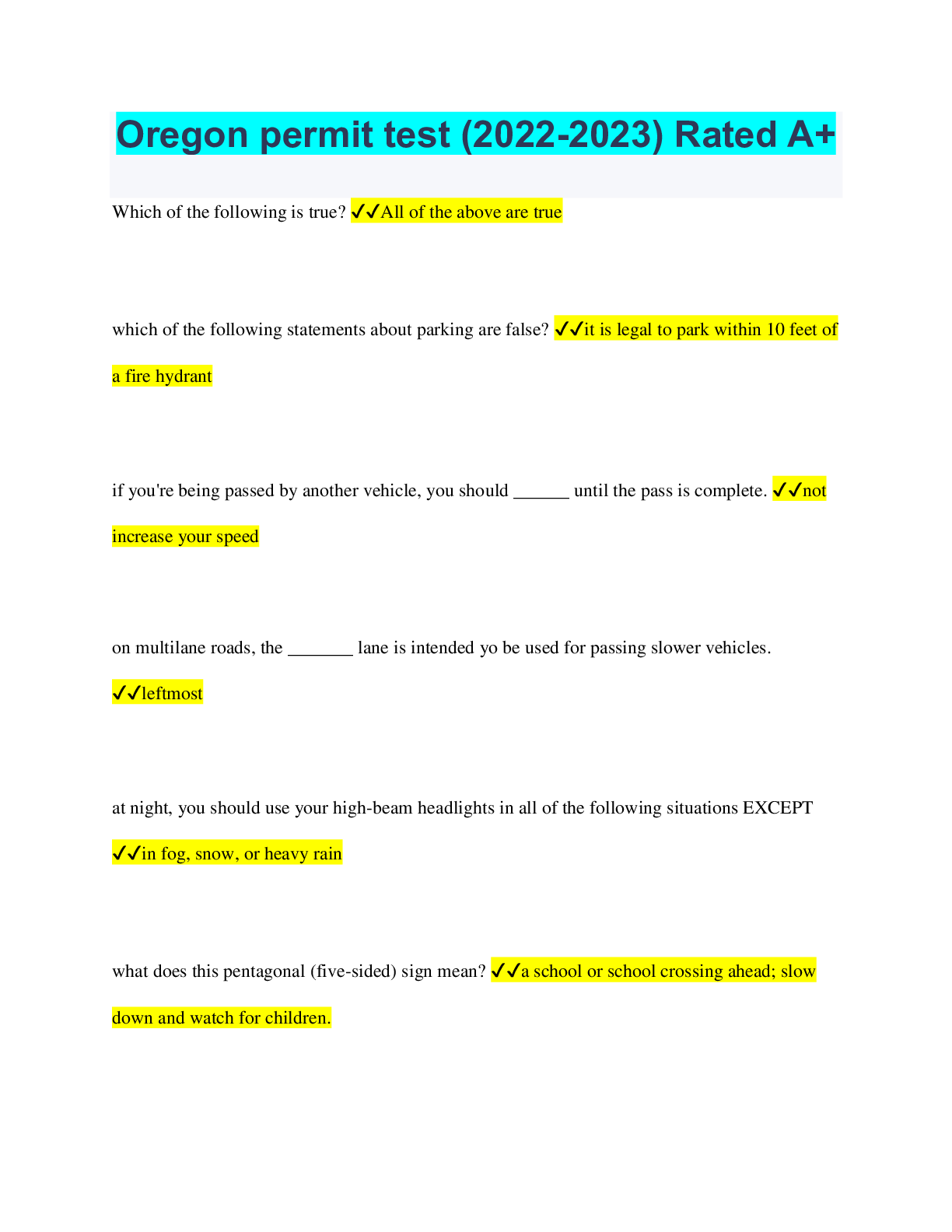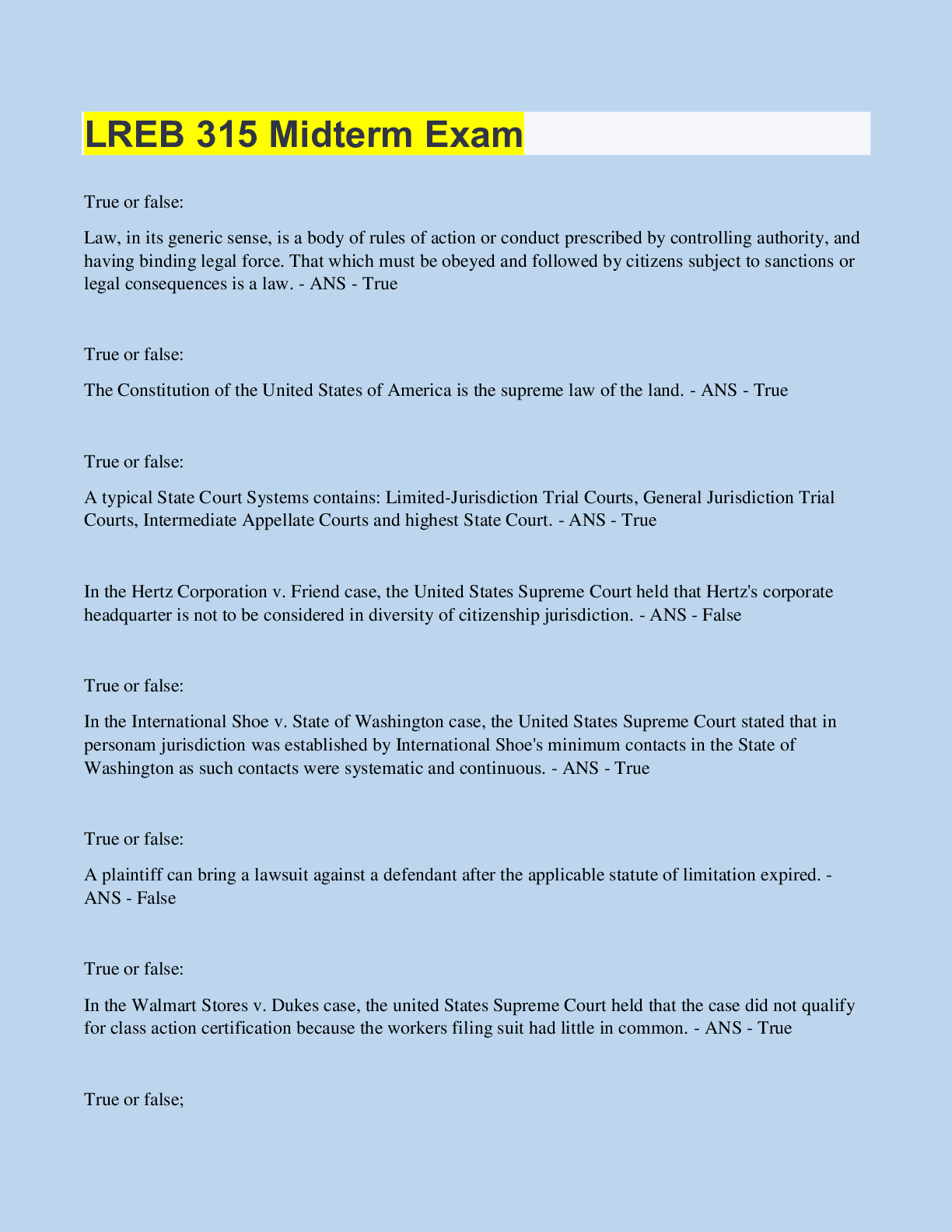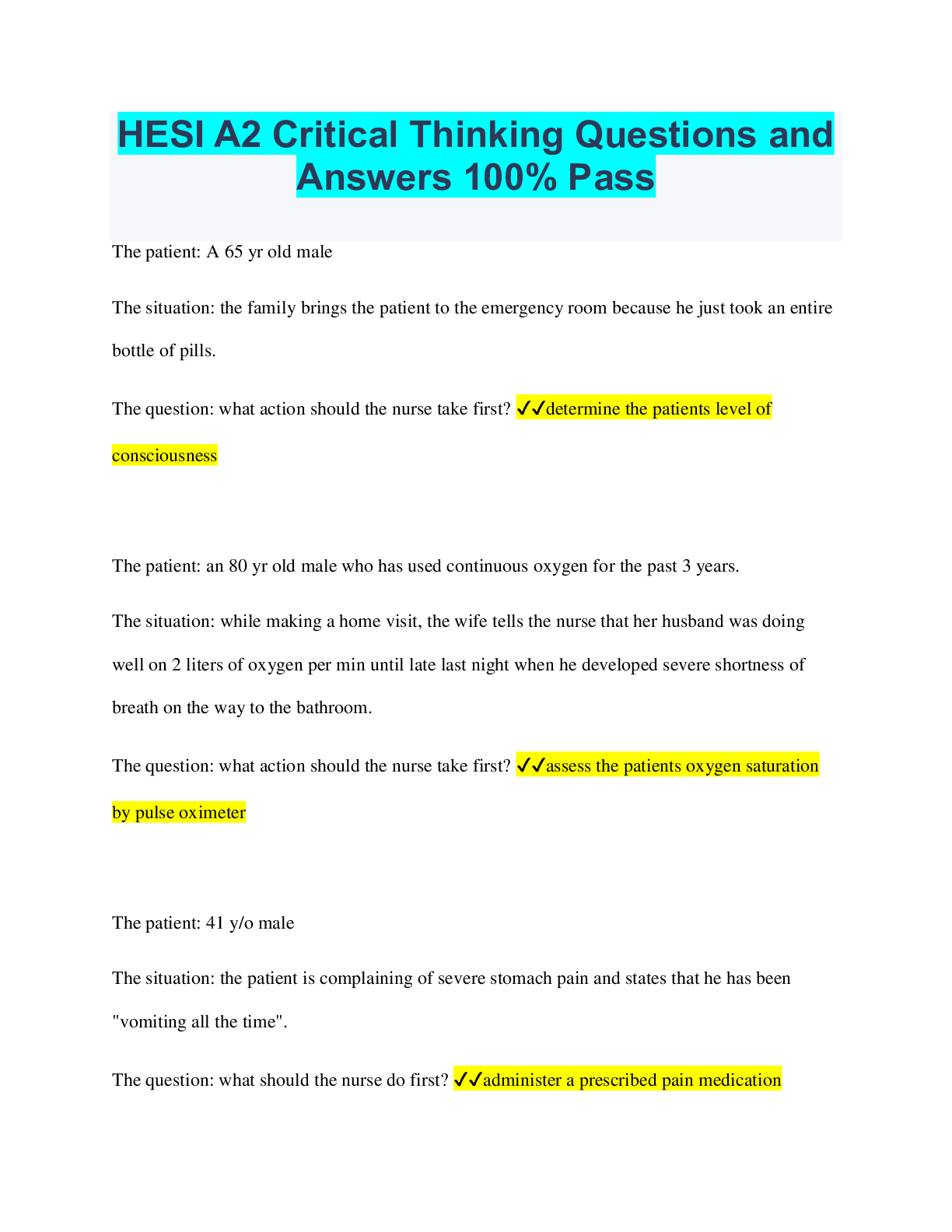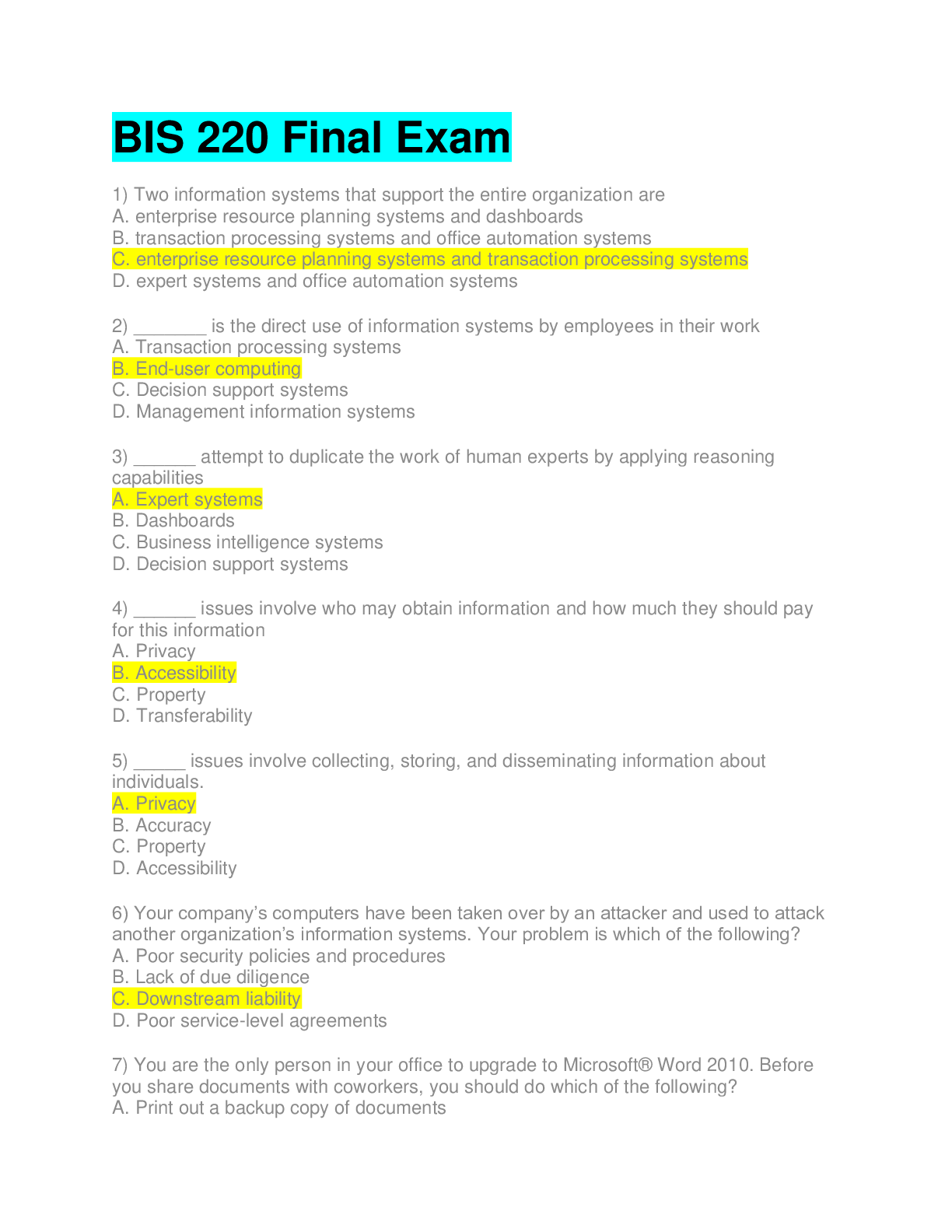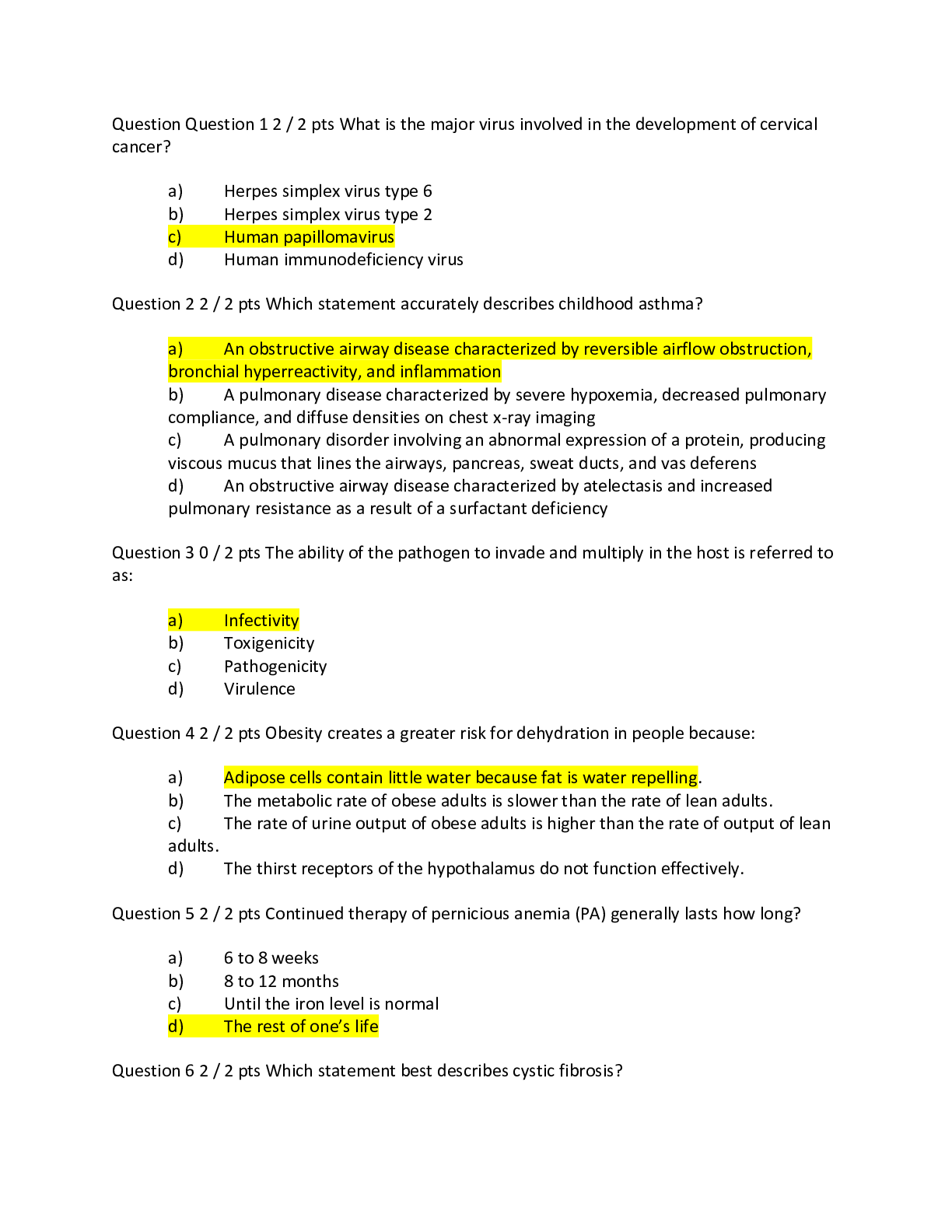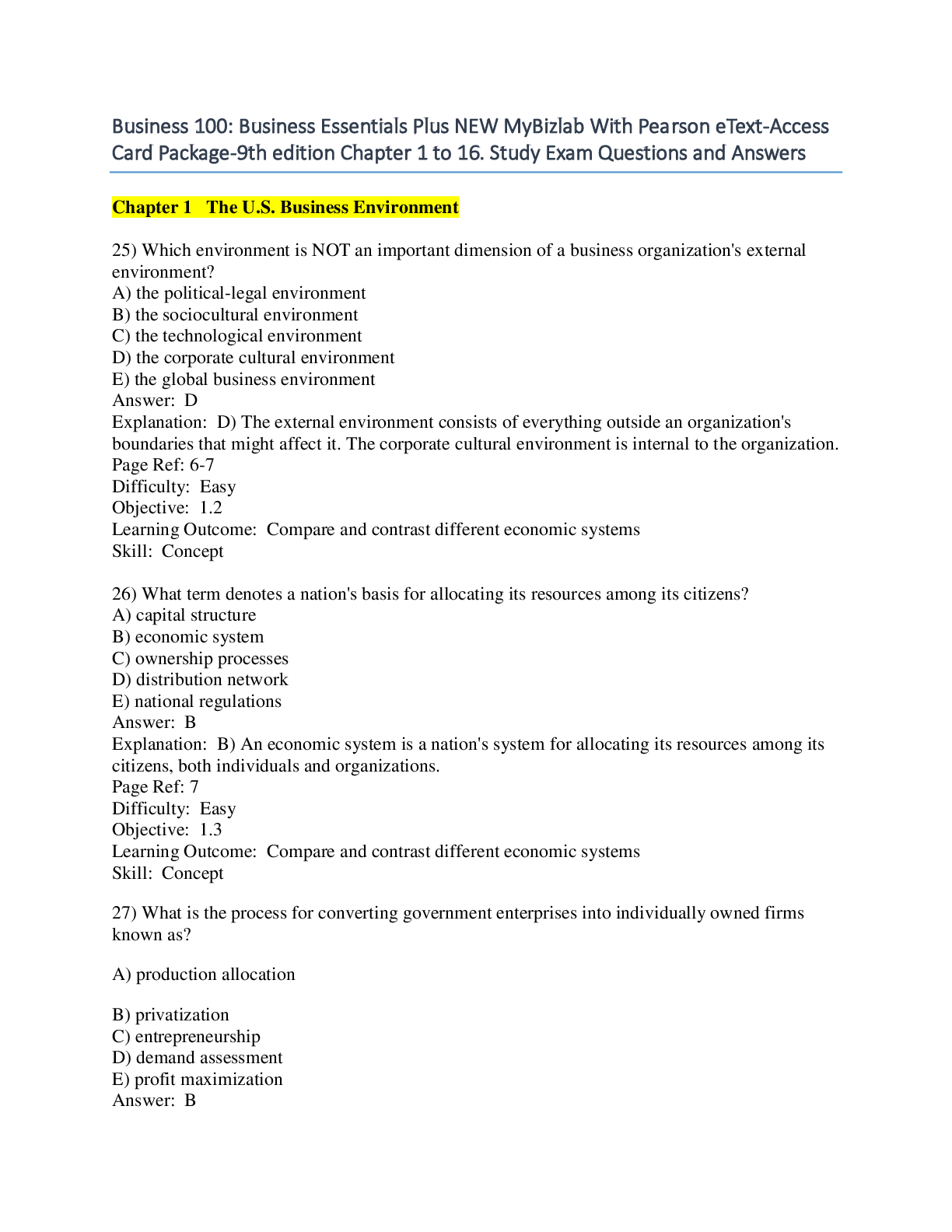Health Care > QUESTIONS & ANSWERS > EMT Midterm Exam Questions and Answers Latest Updated Version Already Passed (All)
EMT Midterm Exam Questions and Answers Latest Updated Version Already Passed
Document Content and Description Below
EMT Midterm Exam Questions and Answers Latest Updated Version Already Passed 1. You are treating a middle-aged man with chest discomfort. He has a history of three previous heart attacks and takes ni... troglycerin as needed for chest pain. You have standing orders to administer aspirin to patients with suspected cardiac-related chest pain or discomfort. While your partner is preparing to give oxygen to the patient, you should: A. ensure that the patient's systolic blood pressure is at least 100 mm Hg as aspirin dilates the blood vessels and can cause a drop in blood pressure. B. confirm that the patient is not allergic to aspirin, give him the appropriate dose of aspirin, and document the time and dose given. C. assist the patient in taking only his nitroglycerin. Aspirin should not be given in conjunction with nitroglycerin. D. contact medical control, apprise him or her of the patient's chief complaint and vital signs, and request permission to give him aspirin. Correct Answer-B. confirm that the patient is not allergic to aspirin, give him the appropriate dose of aspirin, and document the time and dose given. 2. Why does the incidence of diabetes mellitus increase with age? A. Decreased food intake, decreased weight gain, and decreased blood sugar levels B. Decreased physical activity, increased weight gain, and decreased insulin production C. Increased physical activity, increased food intake, and increased insulin production D. Decreased physical activity, increased weight gain, and decreased blood sugar levels Correct Answer-B. Decreased physical activity, increased weight gain, and decreased insulin production 3. How does respiration differ from ventilation? A. Respiration occurs when the diaphragm and intercostal muscles contract, whereas ventilation occurs when those same muscles relax. B. Respiration occurs when oxygen is delivered to the cells of the body, whereas ventilation occurs when carbon dioxide is removed. C. Respiration is the process of gas exchange, whereas ventilation is the movement of air between the lungs and the environment. D. Ventilation occurs when air is forced into the lungs, whereas respiration occurs when air is drawn or sucked into the lungs. Correct Answer-C. Respiration is the process of gas exchange, whereas ventilation is the movement of air between the lungs and the environment. 4. During a 30-minute transport of a stable patient, you should reassess him or her at least ________ times. A. 2 B. 6 C. 4 D. 3 Correct Answer-A. 2 5. Which of the following glands regulates the function of all other endocrine glands in the body? A. Pituitary B. Parathyroid C. Thyroid D. Adrenal Correct Answer-A. Pituitary 6. Activated charcoal is an example of a(n): A. suspension. B. elixir. C. gel. D. solution. Correct Answer-A. suspension. 7. In which of the following patients would the head tilt-chin lift maneuver be the MOST appropriate method of opening the airway? A. A 50-year-old male who is unconscious following head trauma B. A 37-year-old female who is found unconscious in her bed C. A 24-year-old male who is found unconscious at the base of a tree D. A 45-year-old male who is semiconscious after falling 20 feet Correct Answer-B. A 37-year-old female who is found unconscious in her bed 8. A 19-year-old male was stung multiple times by fire ants. He is experiencing obvious signs and symptoms of anaphylactic shock. You administer high-flow oxygen and give him epinephrine via intramuscular injection. Upon reassessment, you determine that his condition has not improved. You should: A. consider that he may actually be experiencing an acute asthma attack. B. request a paramedic unit that is stationed approximately 15 miles away. C. provide only supportive care en route to the hospital. D. repeat the epinephrine injection with the appropriate medical control. Correct Answer-D. repeat the epinephrine injection with the appropriate medical control. 9. An infant's blood pressure typically increases with age because: A. the infant's total blood volume decreases with age. B. his or her normal heart rate usually increases with age. C. as the infant gets older, his or her blood vessels dilate. D. blood pressure directly corresponds to body weight. Correct Answer-D. blood pressure directly corresponds to body weight. 10. A 51-year-old female presents with a sudden onset of difficulty breathing. She is conscious and alert and able to speak in complete sentences. Her respirations are 26 breaths/min and regular. You should: A. insert a nasal airway in case her mental status decreases. B. assist her ventilations with a bag-valve mask. C. administer oxygen via a nonrebreathing mask. D. perform a secondary assessment and then begin treatment. Correct Answer-C. administer oxygen via a nonrebreathing mask. 11. You suspect that a pregnant 16-year-old girl has a broken leg after she was hit by a car. You explain that you plan to splint her leg, and she agrees to treatment. Which type of consent is her agreement considered? A. Minor's B. Informed C. Implied D. Expressed Correct Answer-D. Expressed 12. Alkalosis is a condition that occurs when: A. dangerous acids accumulate in the bloodstream. B. the level of carbon dioxide in the blood increases. C. slow, shallow breathing eliminates too much carbon dioxide. D. blood acidity is reduced by excessive breathing. Correct Answer-D. blood acidity is reduced by excessive breathing. 13. Inadequate circulation of blood throughout the body is called ________. A. hypotension B. shock C. hypoxia D. perfusion Correct Answer-B. shock 14. An infant or small child's airway can be occluded if it is overextended or overflexed because: A. the tongue is proportionately small and can fall back into the throat. B. he or she has a long neck, which makes the trachea prone to collapse. C. the back of the head is flat, which prevents a neutral position. D. the occiput is proportionately large and the trachea is flexible. Correct Answer-D. the occiput is proportionately large and the trachea is flexible. 15. Major risk factors for AMI include all of the following, EXCEPT: A. hypoglycemia. B. hypertension. C. diabetes mellitus. D. elevated cholesterol. Correct Answer-A. hypoglycemia. 16. Which of the following conditions or situations would MOST likely make excited delirium worse? A. Alcohol withdrawal B. Limited physical contact C. Dimly lit environment D. Elevated [Show More]
Last updated: 2 years ago
Preview 1 out of 37 pages

Buy this document to get the full access instantly
Instant Download Access after purchase
Buy NowInstant download
We Accept:

Also available in bundle (1)

EMT Midterm, Practice Test and Final Exam Review Questions and Answers Package Latest Update Rated A
EMT Midterm, Practice Test and Final Exam Review Questions and Answers Package Latest Update Rated A
By Nutmegs 3 years ago
$13
11
Reviews( 0 )
$10.00
Can't find what you want? Try our AI powered Search
Document information
Connected school, study & course
About the document
Uploaded On
Jun 07, 2022
Number of pages
37
Written in
Additional information
This document has been written for:
Uploaded
Jun 07, 2022
Downloads
0
Views
160


